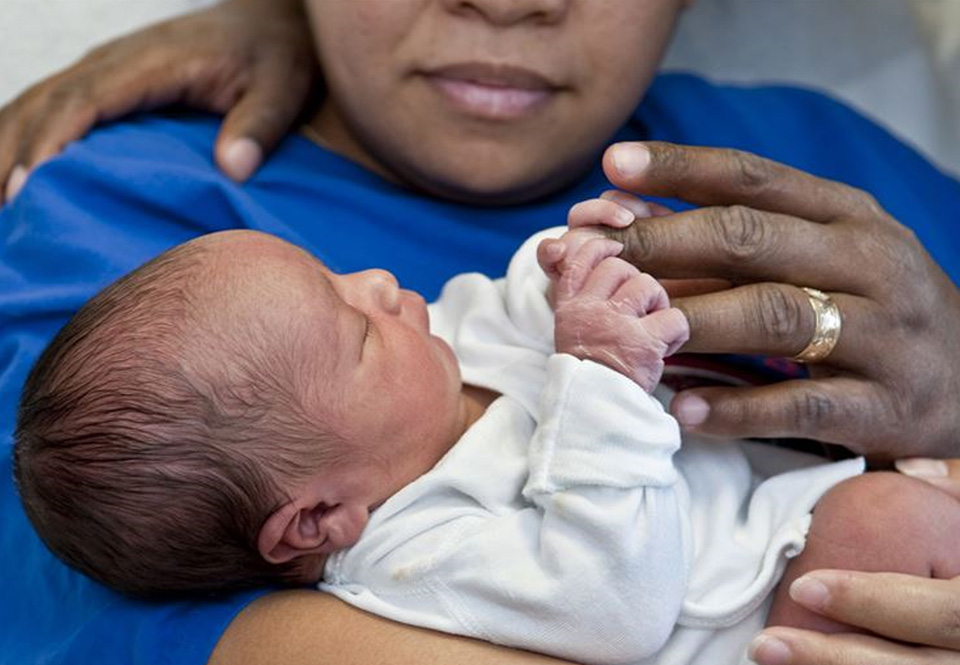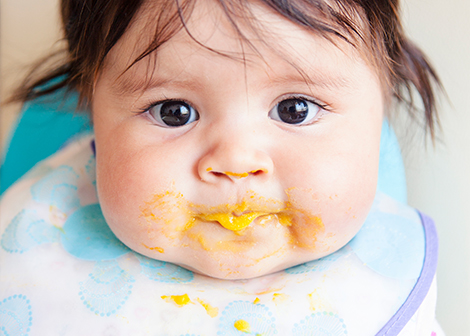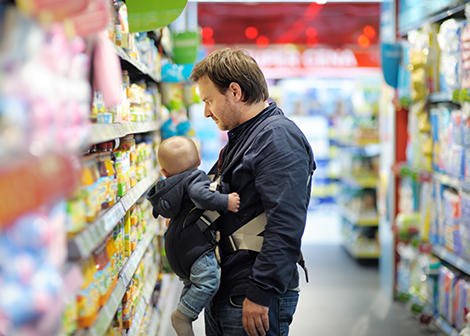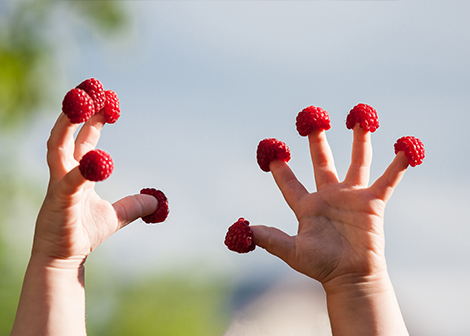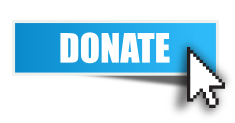Babies learn and develop when they are actively involved and having fun with you during everyday activities.
Development usually progresses from the head down, and from the centre of the body out to the fingers and toes.
There is a rapid rate of growth in a baby’s first year. Birth weight has typically doubled by five months of age. By one year of age, babies are 50% longer than at birth. Some babies are even walking by 12 months of age.
By being engaged and interested in our baby’s day to day activities we help them to develop and grow. It is about making the ordinary everyday moments extraordinary. Every nappy change is an opportunity to chat to your baby – lifting up their bottoms to wipe them clean involves touch and movement. You are stimulating their senses.
Newborn
Gross motor skills
- No controlled movement
- Arms and legs are bent
- Hands are in a fist and brought to mouth
- Continually moving arms out to the side of the body
- Head is not in the middle, but turned to one side or the other
- Can turn head side to side with great difficulty when lying on stomach
- Stands on legs briefly when held upright
Fine motor skills
- Grasps anything that touches the palm of his/her hand (reflex)
- Speech and language – cries at loud noises, listens to speech
One month of age
Gross motor skills
- Still no controlled movement
- Arms and legs are still bent, but not as much as a newborn
- Slightly improved head lifting when lying on stomach
- Head lags significantly when pulled up to sitting
- Stepping movement seen when held in standing position
Fine motor skills
- Continues to have the grasping of hands reflex
- Speech and language – cries at loud noises and listens to speech
Two months of age
Gross motor skills
- Baby appears more floppy than in previous months
- Arms and legs not in the bent position anymore
- Head is more often seen turned to one side or the other
- Able to lift head slightly when lying on stomach
- Uncontrolled reaching / batting at objects
- Eyes beginning to follow a moving object
- Head still lags when put in sitting position, but infant trying to lift head
- Baby no longer stands or steps when held upright
Fine motor skills
- Continues to have the grasping of hands reflex
- Speech and language – cries at loud noises and listens to speech
Three months of age
Gross motor skills
- Head is in the middle with the chin tucked down when lying on back
- Controlled reaching for toys
- Brings toys to middle of body
- Frog leg position when lying on back
- Props self on forearms while lying on stomach
- Able to lift head and chest up when lying on stomach
- Turns head to one side when pulled to sitting
- No trunk control in sitting, needs full support
- Bears weight through the legs with stiff knees when held in standing position
- Toes are curled when in standing position
Fine motor skills
- Holds a toy that is placed in their hand with the 4th and 5th fingers
- Can’t reach out and pick up a toy, but will swipe at it
- Speech and language – begins cooing, recognises parents’ voices, enjoys noisy toys
Reference – Baby Builders. (2017). Developmental stages. Retrieved from http://www.babybuilders.com/developmental-stages/
Want to know more?
Raising Children Network – Newborns development
The Raising Children Network’s newborn development tracker is a great resource for further information
The Royal Children’s Hospital Melbourne – Plagiocephaly (misshapen head)
Zero to three – Brain development


